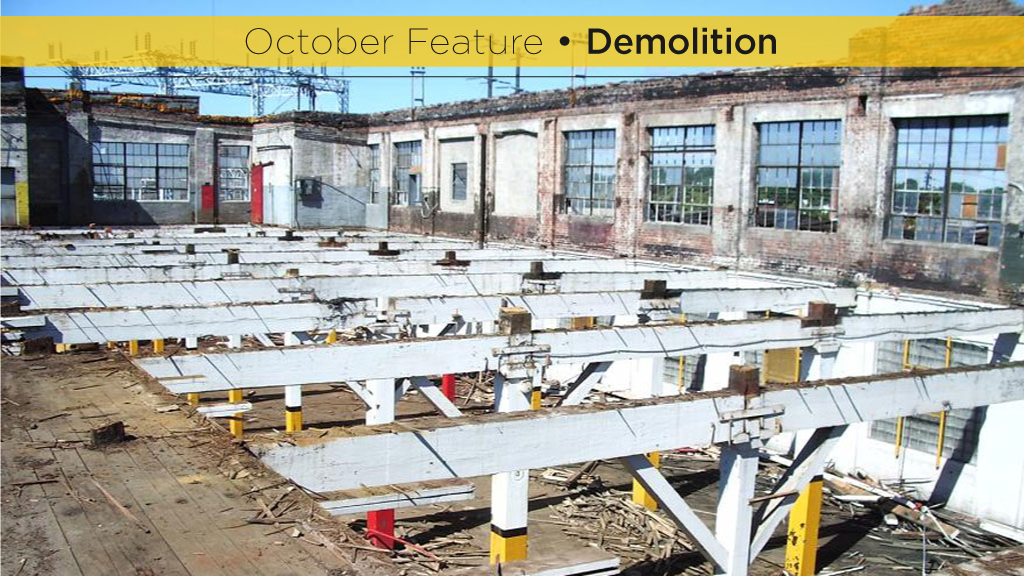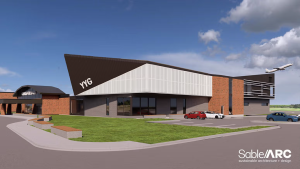Watching a building being demolished by well-placed implosive devices is a public spectacle. It can be also the least expensive and quickest method if the surroundings make the use of machinery too challenging.
With more attention being paid to embodied carbons in construction today, such demolition methods can be seen as unnecessarily wasteful. Few beams and other building components survive, creating waste that cannot be reused or recycled and therefore destined for landfills.
More thought and planning is now recommended, with several steps before any physical removal of the structure itself. These processes must be planned and intentional, usually involving the engagement of decommissioning specialists who can develop a scope of work based on the age and condition of the building and everything in it.
It’s important to define and explain these steps and the order in which they are undertaken.
First comes decommissioning. That means more than disconnecting utilities, shutting down mechanical systems, and securing the building against intrusion.
“A decommission involves looking at a building and seeing what can be reused, what can be salvaged, what can be donated and, as a last option, what can be tossed,” Jonathan Waltr, Sustainability Professional with RE3 Solutions explained to the Globe and Mail. “It’s a detailed analysis of the quality and suitability of existing stock, which allows an organization to make an informed decision on what could potentially be retained when moving premises.”
As Waltr suggests, detailed decisions must first be made regarding reuse or recycling. For example, reuse items might include office dividers and furniture that can be recovered with new fabrics or skins. When reuse isn’t viable due to the interior design of the new space, the resale or donation of common office items is a possibility.
The next process prior to complete demolition is called deconstruction.
Deconstruction is a slower process and more time-consuming that demolition. Materials are stripped away piece-by-piece before taking down the structure. They are then either preserved for future use or broken down and recycled.
Deconstruction and the consequent reselling and reusing of actual building materials has become an important industry in the past few years. Waste sent to landfills is minimized and embodied carbon content and whole life carbon emissions of structures built with those deconstructed components are significantly reduced.
Tracking embodied carbon content in construction is becoming an important issue for all project parties, as ESGs have come into prominence. Although life cycle analyses and environmental product declarations are available for many new construction materials, the same quality and quantity of information does not exist for recycled building components.
In response, Dutch architect Thomas Rau proposed the concept of “material passports” in 2015. He describes it as a public database that digitally catalogues the characteristics of materials used in a building so their potential for recycling can be determined. Rau sees material passports as a layer of data that can be easily incorporated into the Building Information Modeling (BIM) processes already used in construction.
Rau and his architect wife presented a petition to the United Nations, requesting a Universal Declaration of Material Rights.
In the meantime, the Netherlands has adopted Rau’s concept and introduced tax incentives for developers who register material passports, and is considering making them mandatory for new buildings. In 2022, the Dutch government increased its Environmental Investment Rebate Scheme, allowing commercial real estate owners to get a tax advantage of up to 45 per cent on their investment in circular construction.
Incentives such as these may be required elsewhere, as project owners, designers and builders consider the financial implications of deconstruction.
Each project, of course, has unique characteristics. Sometimes a building’s decommissioning potential is limited and deconstruction simply too costly and time consuming, as careful labour is required, much of it manual, to remove fragile items such as moulding, windows and stonework.
Even so, other major portions of a building can be removed in a manner that minimizes waste and the future loss of construction materials. Concrete can be ground up and reused. Steel and other metals can be recycled.
The recent development of material passports is leading towards what is called “circular construction” and with it, increased future planning, says Pablo van den Bosch, director of Madaster, a Dutch-based online registry for materials and products. In the future, he sees materials being identified well in advance so that deconstructed components can be transported directly to a new building site rather than lying in an interim storage yard.
“That saves a lot of transportation costs and a lot of space,” he told ConstructionEurope. “A digital process makes it a lot more efficient and therefore hopefully cheaper and better for the environment.”











Recent Comments
comments for this post are closed